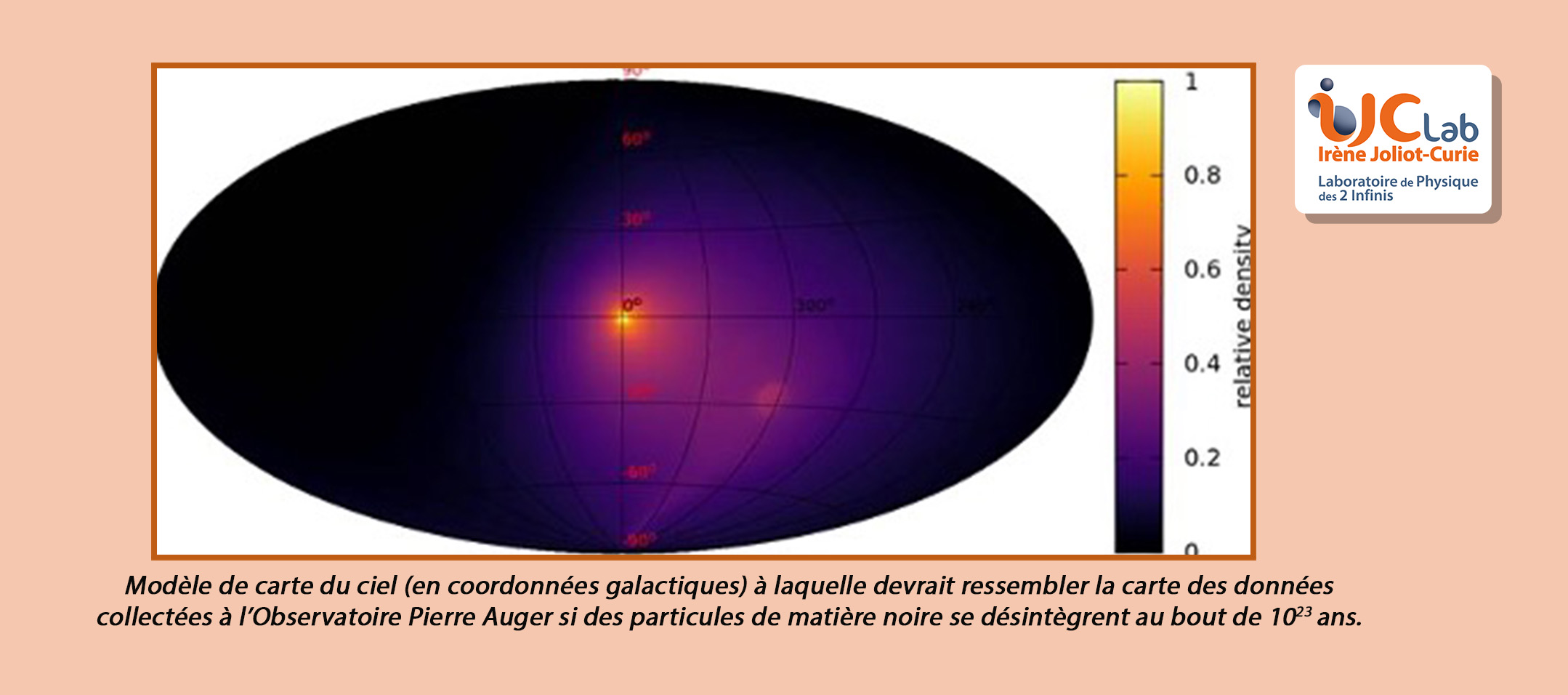
What is dark matter made of? The absence of ultra-high energy photons in the Pierre Auger Observatory data constrains certain scenarios of super-heavy dark matter.
Dark matter, the mysterious substance that makes up 27% of the mass of the Universe, is often thought to resemble “heavy protons” behaving like neutrinos. However, nothing prevents this dark matter from being much heavier and even more elusive than a neutrino. This would be the case in particular if the particles of dark matter interacted with visible matter only by gravitation, in addition to their own dynamics in a so-called "hidden" sector distinct from visible matter. These particles, which could weigh up to nearly of one microgram (for comparison, a human cell typically weighs 3.5 micrograms), would then have emerged from the primordial universe during the so-called period of warming following that of inflation.
Until now, the detection of a large number of primordial gravitational waves in the next observations of the cosmic microwave background was considered the only indirect signature of this scenario. Another, more direct path has just been traced in an article published in the journal Physical Review Letters to bring this scenario to light. The existence of a new quantum number relating to the internal dynamics of the hidden sector would a priori guarantee the stability of one or more very massive particles. However, even such particles can eventually decay under the influence of "instantonic effects". If these are strong enough, the products of these decays should produce copious streams of ultra-high energy photons.
The Pierre Auger Observatory, in which the Astro-Particules de Haute Énergie team of the A2C cluster participates, has so far not observed such fluxes of photons with energies greater than 108 GeV, which makes it possible to set limits higher than the dark sector coupling constant (an analogue of the fine structure constant, but which only concerns dark matter). These limits are, to date, the best ever obtained from instantonic processes, which are invoked in several areas of theoretical physics (string theory and particle physics). They are also complementary to those obtained on the cosmological parameters governing the thermal history and geometry of the universe from observations of the cosmic microwave background in a super-heavy dark matter scenario.























